Table of Contents
Old desk makeover
Check out this old desk makeover that I created. This will fit perfectly in the alcove of my guest/office. This desk was practically made for this room!
My blog periodically contains affiliate links meaning that if you make a purchase, I might make a small commission at no extra charge to you. Purchases made through them are greatly appreciated.
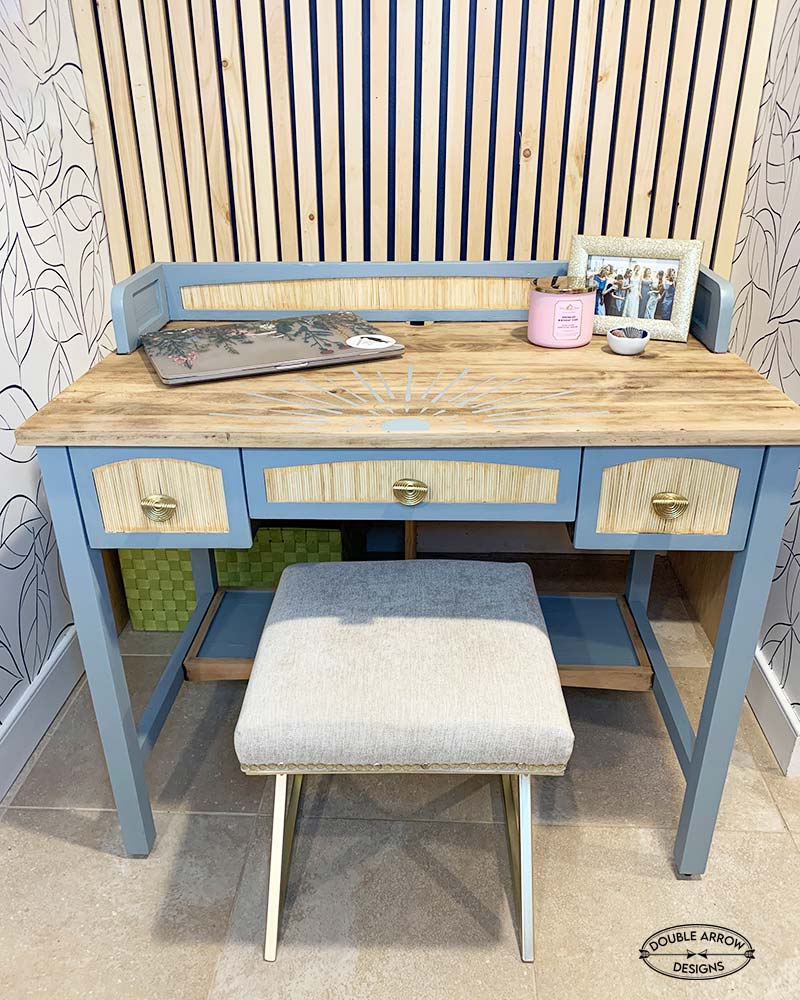
How to update an old desk
Most old pieces of furniture have a dark stain, old knobs, and some repairs. I always take a look at a piece and before I begin determine if it has “good bones” because anything of quality can always be updated.

- Replace old hardware with updated pulls or knobs. Check out my post on Furniture Pulls and Knobs That Can Transform Any Piece for amazing ideas!
- Strip old dark varnishes and stains for a more modern lighter looking wood color.
- Paint old wood for an updated look in a fresh color.
- Use Peel and stick wallpaper for draws check out my post 9 Peel And Stick Wallpaper Ideas, for some additional ideas.
- Stencils! yes, on this old desk makeover I used a stencil that I created that you can purchase on my Etsy store.
Preparation for an old desk makeover
- Clean!! yes first order of business! clean not once but twice. Good old fashion warm sudsy water and a sponge you do not need anything fancy.
- Repair any loose legs, or pieces. Either by nailing them back into place or using wood glue and a clamp. Glue down or replace any laminate surfaces.
- Remove any hardware that you will either clean, or replace. (store old hardware in a container, you never know when you may use this on another piece).
- Strip any old paint or varnish. slather on the paint/varnish stripper. I leave this on for a few hours for best results. You may have to repeat, depending on your specific project.
- Once stripped, use a hand sander to finish any uneven surfaces of paint or varnish.
- Note* if the surfaces are laminate make sure that you lightly sand so you do not sand away this layer.
- Use a drop cloth under your piece you do not want to end up damaging your floor.
- Put on caster wheels so you can easily rotate your piece.
Wood on this Refinished desk
Because this was an all wood desk, I wanted to bring out the beauty of the natural wood. I used a stripper to take off the old varnish. Once this was removed I used a hand sander to get an even tone and then used a fine grit wood block to smooth out the overall hand. Once the surface was prepared, I used a damp microfiber cloth to remove any excess wood dust. I seal all my pieces with Minwax Polycrylic sealer in a matte clear finish. Super easy!
Once I stripped the old varnish off this old desk, there was a very uneven look. This helped make my decision to paint some of the harder areas with paint so that it would have more of a finished surface overall.
Materials and Supplies used for this old desk makeover DIY
Depending on your project some supplies or materials may differ. for this specific project this is what I used:
- Stripper
- Handheld sander
- Sanding blocks
- Polycrylic– clear matte
- Sponge brushes
- Knobs– The ones I used are sold out, but check out all the other unique ones that Anthropologie has.
- Peel and stick wallpaper
- Bamboo skewers
- Wood glue
- Drop cloth
- Furniture felt tabs– This helps protect your floors from getting scratched.
Decorative stencil for wood furniture
For this piece I envisioned a large sunburst on the top of the desk. I created this sunburst stencil specifically for this project and can be sized up or down depending on what it needs to be used for. For the top of the desk I used half the stencil to create this design. Then I used the full stencil for the sides of the desk.
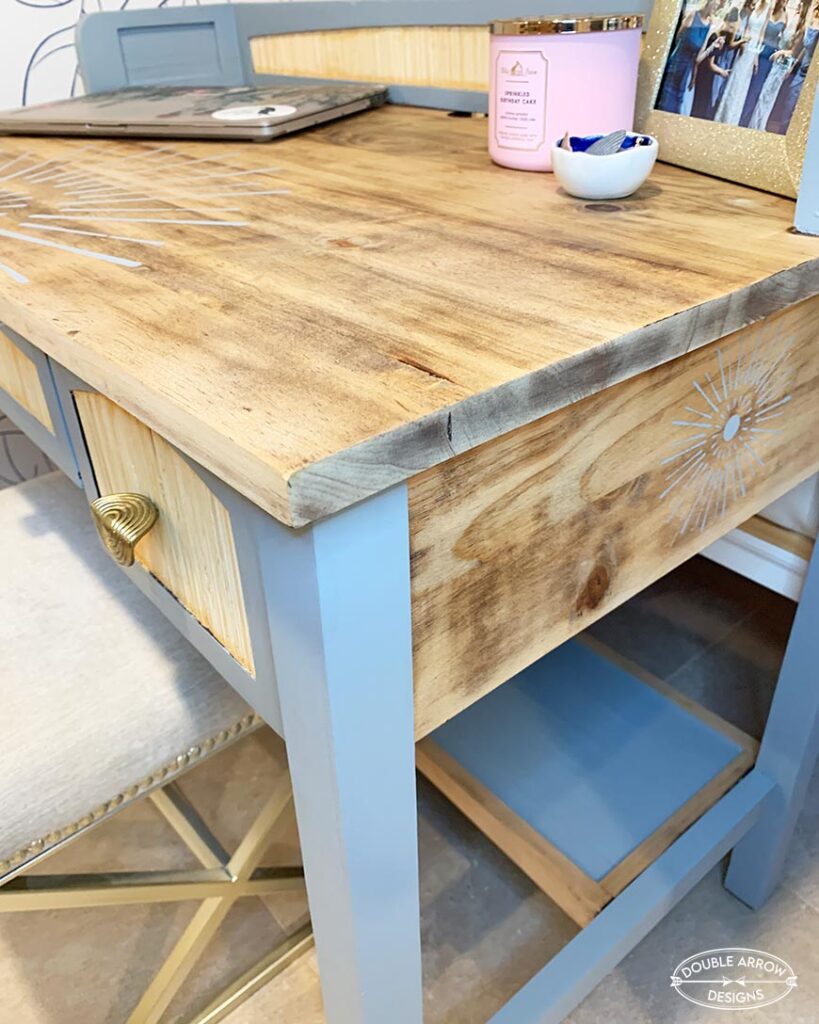
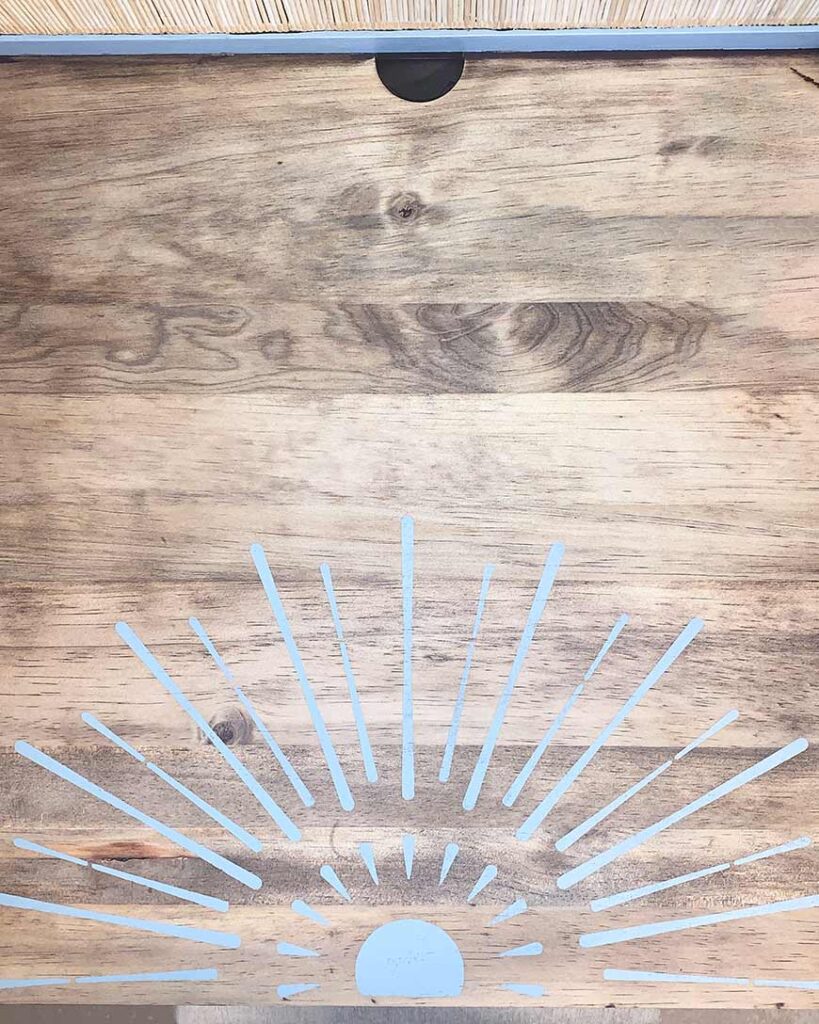
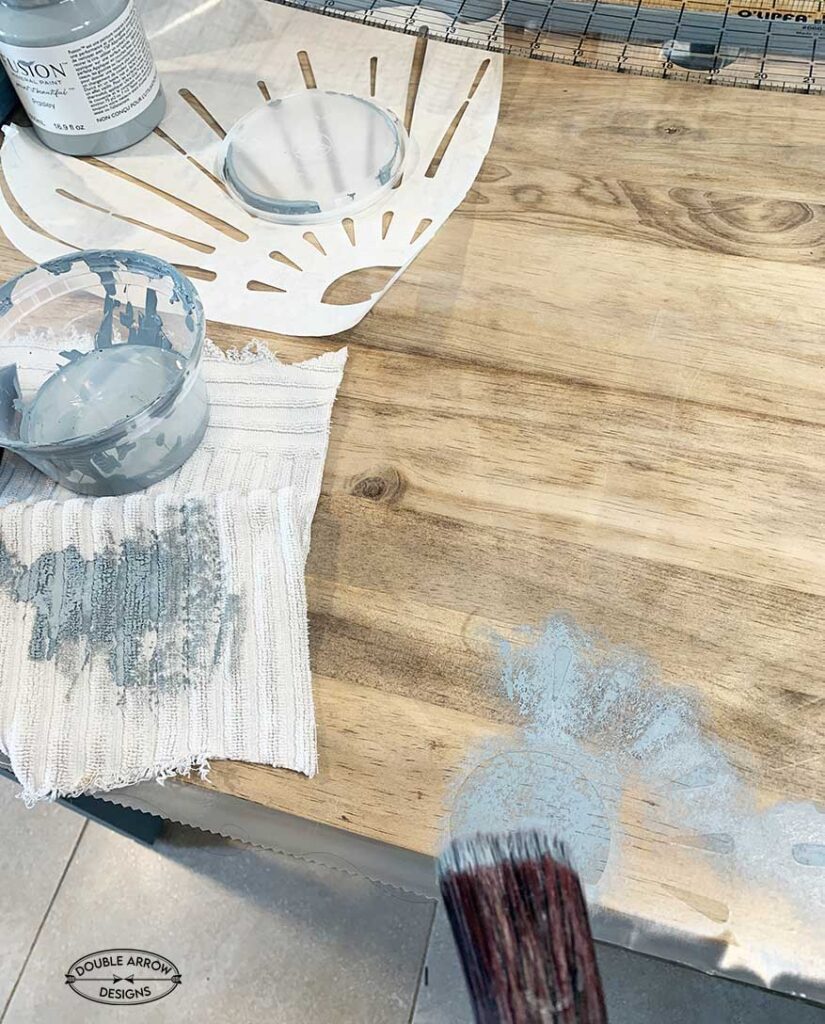
Additional Stencils for wood furniture
Many of my furniture projects include a stencil. I love the idea of adding a stencil for a finished custom look to a lot of my repurposed furniture pieces. Take a look below for some fun stencils for wood furniture that I created!
Check out my Double Arrow Designs Etsy store to purchase this. Can easily be used with your Cricut or Silhouette Machine.
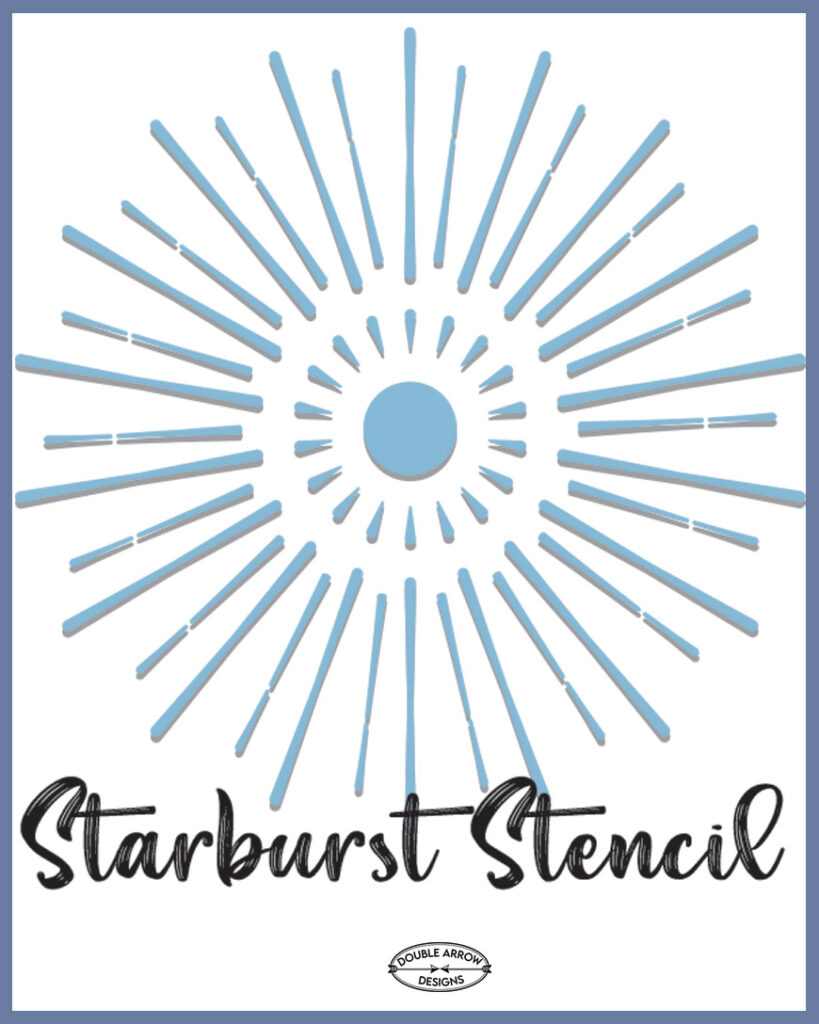
Adding bamboo skewers to drawer and backsplash facing
This specific desk that I picked up has these inlaid drawers facings. I loved the idea of giving them a texture. There has been a big trend for wood slats- yes I did this on a wall in my house check it out here How to make a Wood Slat accent Wall-Easy DIY. So I bought these bamboo wood skewers, and because of their size, once I cut them down they worked perfectly as a decorative finish.
I cut 4 at a time using garden shears. I placed the finished bottom at the ledge of the inlay then used a pencil to mark where I needed to cut them. Once this was done, I used a q-tip and wood glue and adhered them to the drawer surface.
I finished them off by using wood filler at the top and the bottom to make the bamboo skewers look seamless at the top and bottom. I will seal the drawer faces with polycrylic to give both the wood and skewers a unified finish while sealing in the sanded wood.
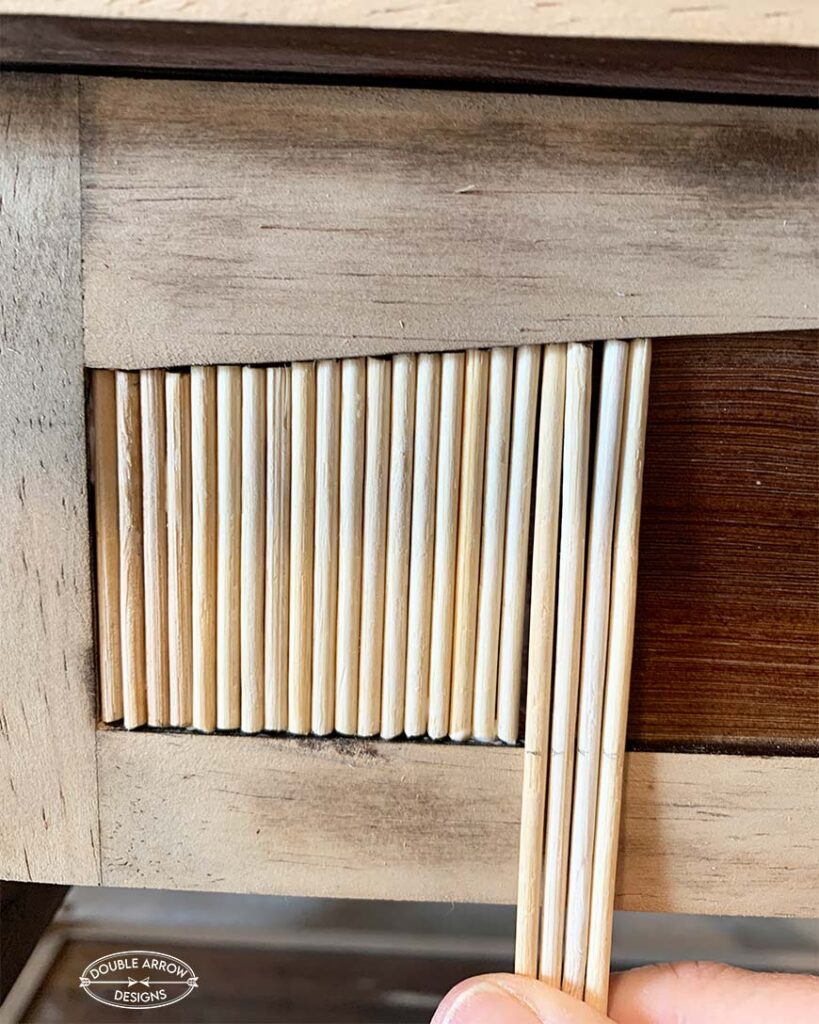
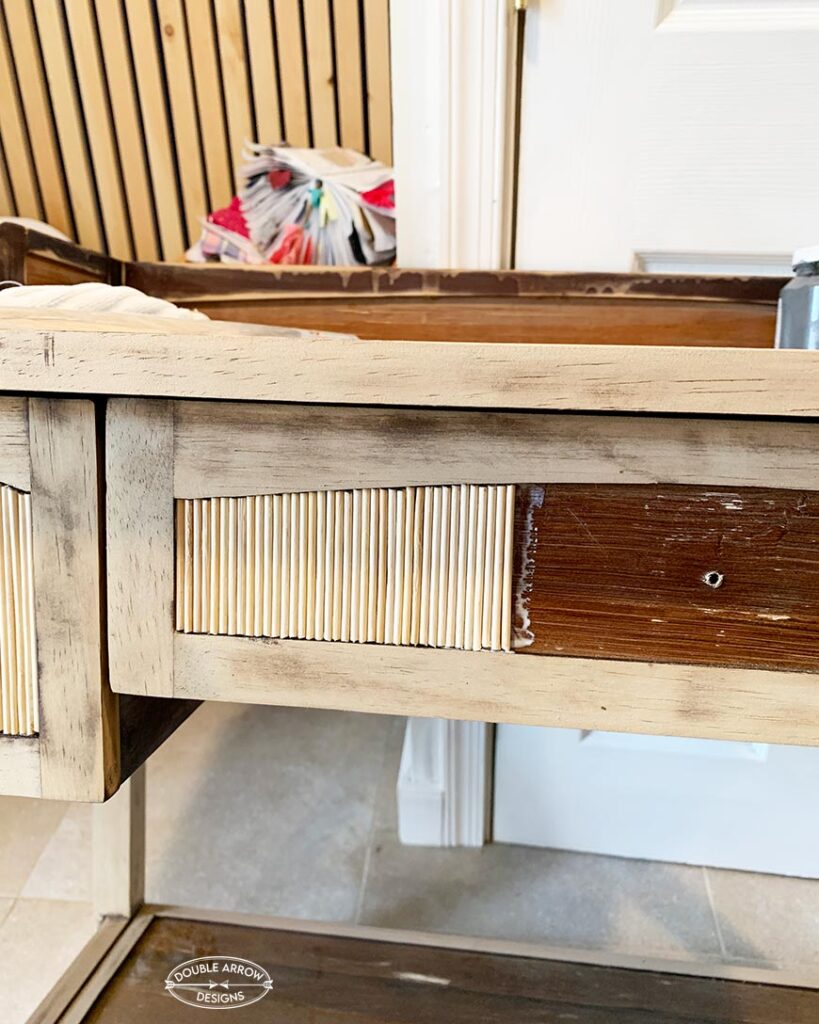

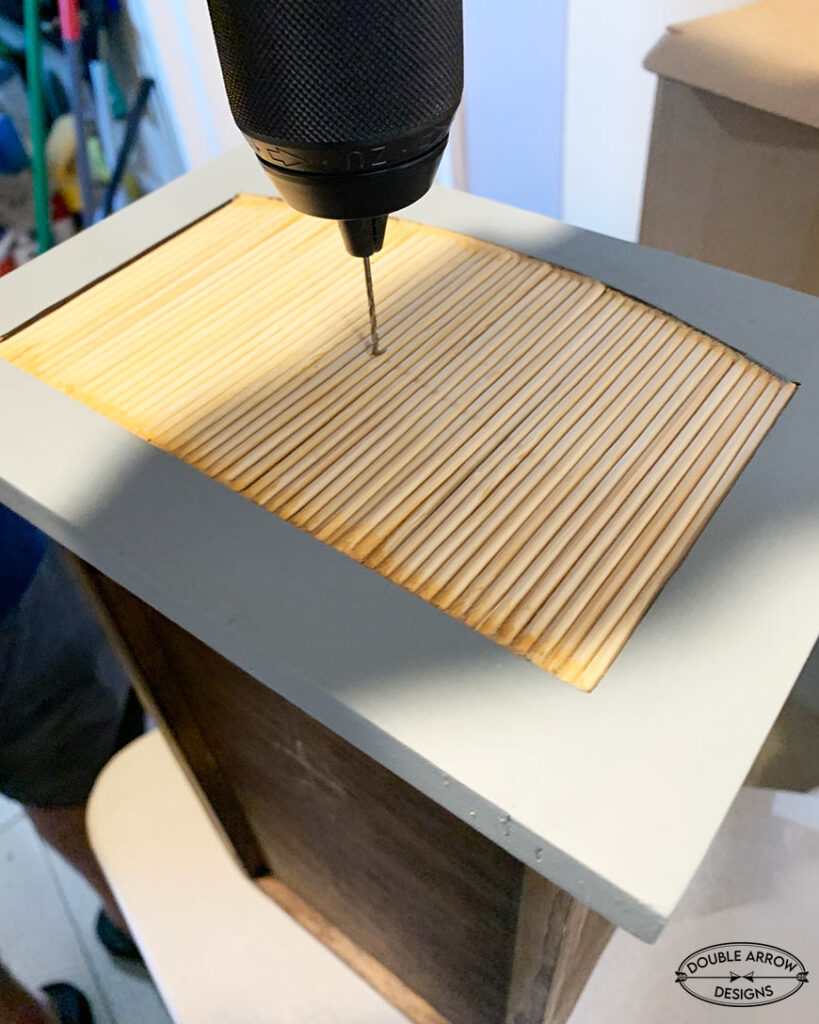

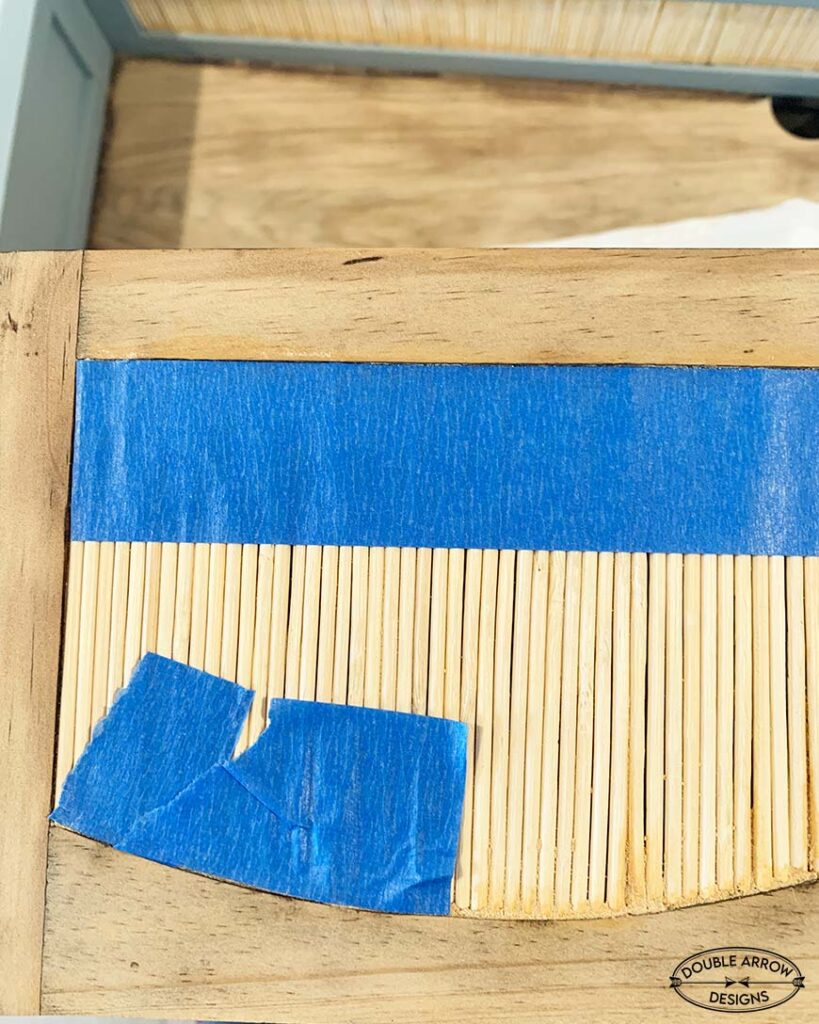
- Cut four at a time- using a pencil to mark length needed.
- Using a garden sheer I cut bamboo skewers to length.
- Glue bamboo skewers in place.
- Wood filler helped to fill in the gaps.
- Using a very small drill, to avoid splintering the bamboo skewers.
- Transitioning to drill size for drawer pull screw.
- Painters tape around wood skewers before painting drawer faces.
Painting wood furniture
I loved the natural wood, skewer faced drawers and the knobs for this piece. Lending itself to a Boho feel. I decided to incorporate a few areas of painted wood to add another dimension to this piece. I have fallen in love with Fusion paint. It’s more expensive than the usual indoor paint I had been using on previous projects, but the results are amazing!
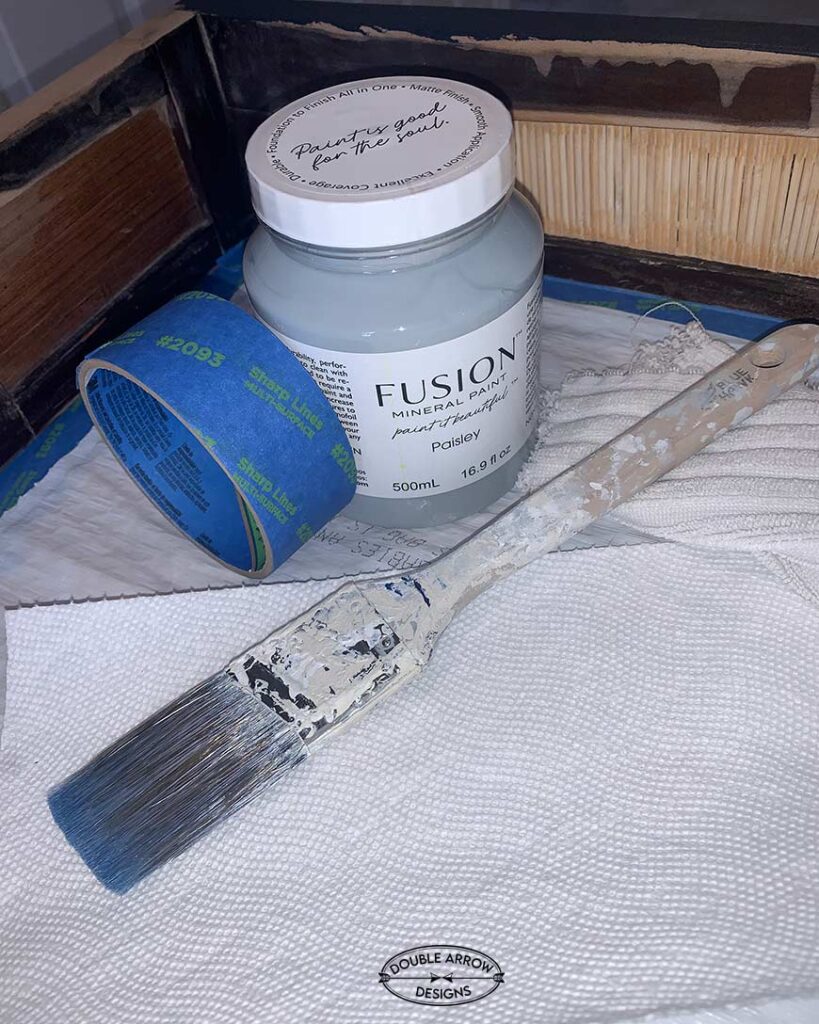
Choosing Paint for my wood furniture
I just found a retailer out on Long Island that sells Fusion paint! How exciting! I chose one of their newer colors “Paisley” it’s a bluish grey color that will pair perfectly with the natural wood. Fusion has come out with 11 new shades this season. I am in LOVE!
Final touches on old desk makeover
Now that I have completed everything there are a few steps that I did to ensure a completed desk makeover.
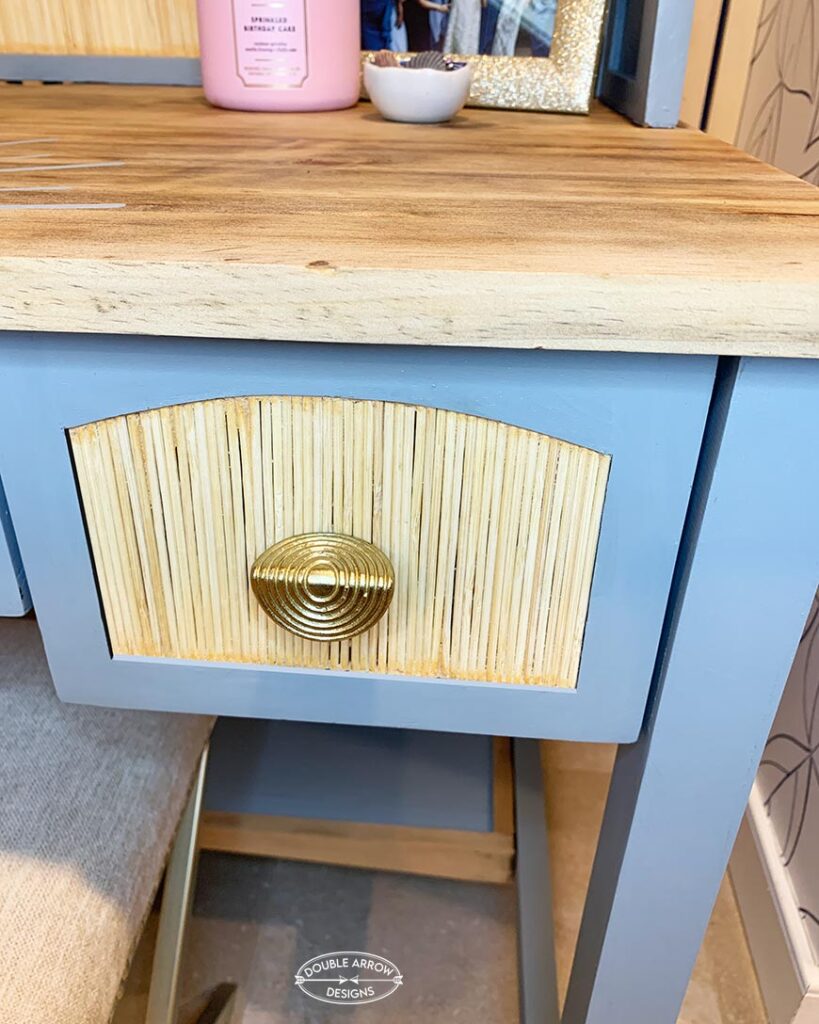
- Lightly sand desktop once painted stencil is complete. I used a fine grit 220 sanding block to smooth out any roughness and marry the paint to the wood.
- Take a damp cloth and wipe down any excess dust or dirt.
- Use Polycrylic either in a spray or in a can with a sponge brush and seal in all the wood.
- I used spray on this project but I prefer to the can with a sponge I feel like that gives the surface a fuller coverage layer.
- Fusion paint is suppose to have a built in top coat. However if you are painting a surface that will be used a lot I always recommend this additional step to really seal in the paint.
- Pick out your drawer knobs! This is the jewelry to your piece. Check out my post Furniture Pulls and Knobs That Can Transform Any Piece.
- I would recommend using felt tabs on the bottom of any furniture pieces. This protects your floors and makes it easier for you to move a piece on a wood floor without scratching it.
RELATED POST
Check out some additional painted furniture projects that I have done. Hope you enjoy!
- Repurposed China Cabinet – I used Fusion Midnight blue on this and it looks amazing
- How to Refinish A Secretary desk– I bleached the wood to give this piece a whole new look.
- How To Paint A Metallic Dresser– Total glam piece!

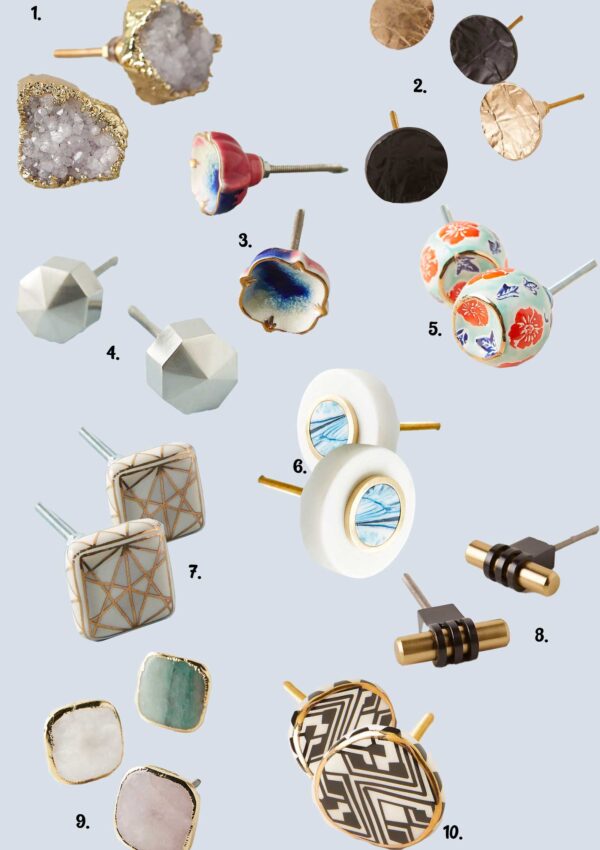

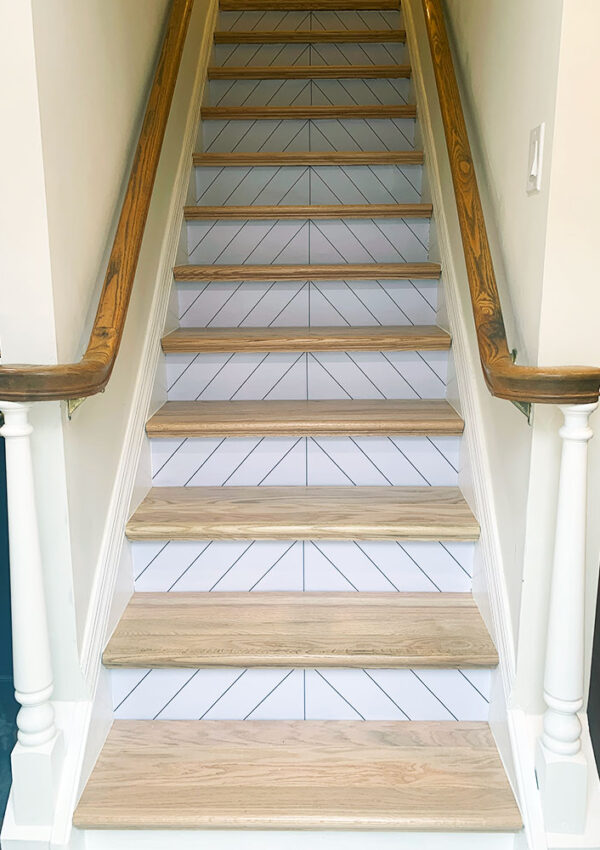





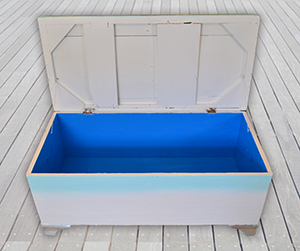
Leave a Reply